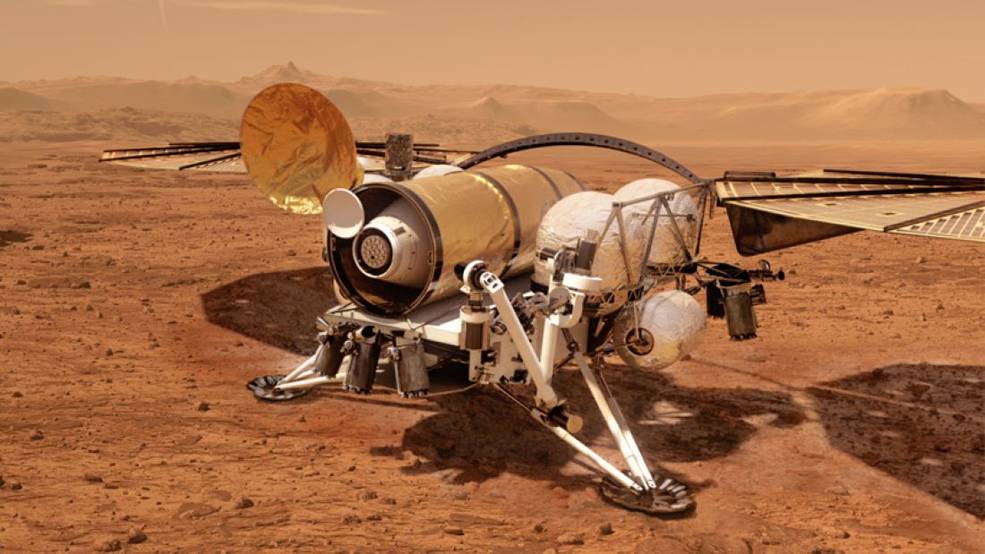*
PRESS RELEASE SOURCE: NASA
Cover image: An artist’s concept of a Mars Sample Retrieval Lander.Credits: NASA
*
NASA and the European Space Agency are planning to use robotic Mars orbiter and lander missions launched in 2027 and 2028 to collect samples gathered by NASA’s Perseverance rover. The samples, securely isolated inside a robust Earth Entry System using a layered “container within a container” approach, could be brought to Earth in the early 2030s.
The Earth Entry System would then be transported to a specialized MSR sample receiving facility.
*
The public meetings will include briefings about the status of the National Environmental Policy Act process for the proposed program, as well as its purpose and scientific goals.
*
*
Meetings will also cover why the Utah Test and Training Range operated by the U.S. Air Force is the proposed landing site for the samples, and what planners are doing to ensure safe and secure return of the samples – a topic known as backward planetary protection.
*
NASA is requesting public comment on the scope of a Draft Environmental Impact Statement for the agency’s proposed Mars Sample Return (MSR) campaign. Comments will be accepted through the mail and online through Monday, May 16, 2022.
*

*
The agency also is hosting two virtual public meetings about the proposed program at 3 p.m. EDT on Wednesday, May 4, 2022, and 8 p.m. on Thursday, May 5, 2022, at: https://jpl.webex.com/meet/msr
*
An audio-only feed of the public meetings will be available at 510-210-8882, meeting number 901-525-785. The online Webex feed of the meetings will include real-time automated closed captioning. Advance registration for the meetings is not required. The meeting website will be accessible to participants starting about 15 minutes before the event begins.
*
NASA will consider all comments received during the scoping process in the subsequent development of the MSR Draft Environmental Impact Statement, which is currently scheduled to be released for public comment later this year.
*
Additional information on the agency’s National Environmental Policy Act process and the proposed NASA-ESA MSR program is available online.
*


